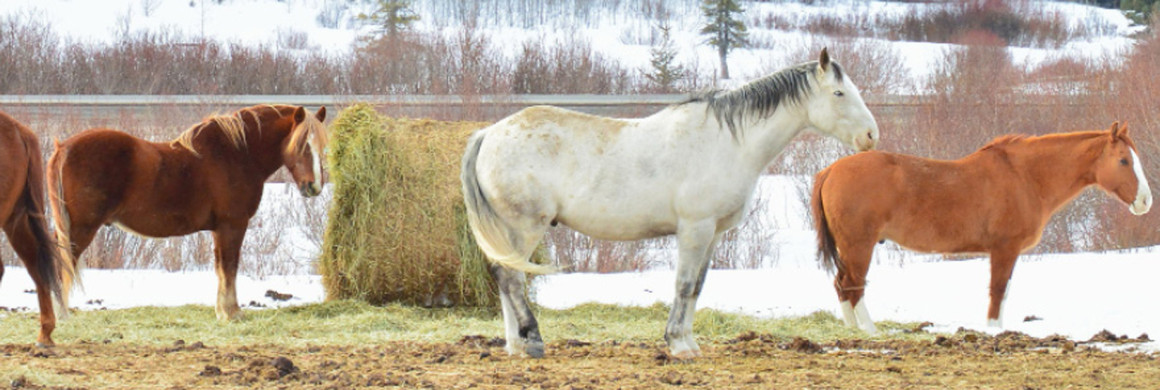Feeding horses in the winter: it can be a joyless activity for the humans in the barn, depending on where those humans live! Rising before the sun to tramp through the snow, wrestle open the barn doors, and coax water through the pipes is hardly anyone’s idea of fun, but we do it year after year, because we love our horses.
Horses are generally happy to eat no matter what the season, although their menus may change quite a bit between July and January. Even if work levels remain the same throughout the year, their dietary needs adjust as the weather gets worse, and feed freshness declines. Hay, grain, and supplements all need to be adjusted to make up for the changing seasons.
Buying hay in the winter isn’t nearly as fun as buying hay in late summer. Any of those magical words like “first cutting” are long gone, and all that is left is the dry, yellowing remnants of a season you only dimly remember, one that was free of icy water troughs and frozen arenas. Winter hay, like much of winter itself, tends towards the brown and depressing end of the color spectrum.
Still, forage is what keeps horses going in the cold months. Old-fashioned practices like adding corn to the diet are falling out of favor, as science shows us that slow-fermenting fodder like hay are what truly builds up a horse’s internal furnace. When it gets colder, we’ve learned, it’s best to throw a few extra flakes of hay to the ponies. When you’re buying hay, look for leaves instead of seed-heads; leafy hay was baled at a more digestible period in the grass’s life-cycle, while seed-heads indicate a more mature, and less digestible, bale of hay.
So if hay is the best feed to build up a horse against the cold, how do we make up for its lackluster winter qualities? Luckily, most horses will accept brown hay as happily as green. It’s up to us to make sure it’s free of mold and dust (your nose should be able to advise you on this one) and to back up the diminished nutritional quality of late-season hay with a good concentrate or supplement. When you’re buying hay, look for leaves instead of seed-heads; leafy hay was baled at a more digestible period in the grass’s life-cycle, while seed-heads indicate a more mature, and less digestible, bale of hay.
As the winter wears on, vitamins from natural sources can be on short supply. When the sun is rare and the pasture is dormant, vitamins A, D, and E should be added to your horse’s diet. Most horse feeds include ample, balanced quantities of your horse’s daily vitamins and minerals, but if your horse is an easy keeper most of the year or subsists mainly on forage, you could be facing vitamin deficiencies without realizing it.
Although it can be hard to remember in January, spring is just a few months away! Until then, keep your horses happy and warm with good feed, balanced vitamins, and lots and lots of hay.


